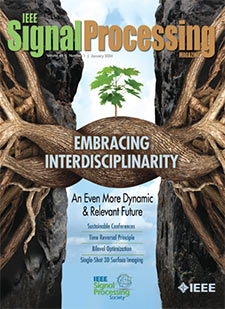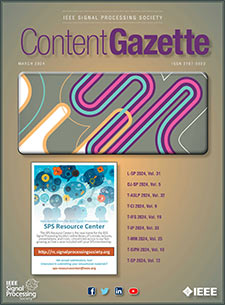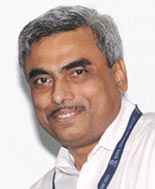- Our Story
- Publications & Resources
- Publications & Resources
- Publications
- IEEE Signal Processing Magazine
- IEEE Journal of Selected Topics in Signal Processing
- IEEE Signal Processing Letters
- IEEE/ACM Transactions on Audio Speech and Language Processing
- IEEE Transactions on Computational Imaging
- IEEE Transactions on Image Processing
- IEEE Transactions on Information Forensics and Security
- IEEE Transactions on Multimedia
- IEEE Transactions on Signal and Information Processing over Networks
- IEEE Transactions on Signal Processing
- IEEE TCI
- IEEE TSIPN
- Data & Challenges
- Submit Manuscript
- Guidelines
- Information for Authors
- Special Issue Deadlines
- Overview Articles
- Top Accessed Articles
- SPS Newsletter
- SigPort
- SPS Resource Center
- Publications Feedback
- Publications FAQ
- Blog
- News
- Dataset Papers
- Conferences & Events
- Community & Involvement
- Professional Development
- For Volunteers
- Information for Authors-OJSP
-
Home
An Exciting Juncture for Signal Processing Research: On Building Bridges, Challenges, and Opportunities
Conferences Events IEEE JSTSP Article IEEE Signal Processing Magazine IEEE TIFS Article IEEE TMM Article IEEE TSP Article Jobs in Signal Processing Lectures Machine Learning Seasonal Schools Signal Processing News SPM Article SPS Distinguished Lectures SPS Newsletter Article SPS Webinar SPS Webinars SPS Webinar Series Webinar webinars -
Our Story
What is Signal Processing?

The technology we use, and even rely on, in our everyday lives –computers, radios, video, cell phones – is enabled by signal processing. Learn More » -
Publications & Resources
-
SPS Resources
- Signal Processing Magazine The premier publication of the society.
- SPS Newsletter Monthly updates in Signal Processing
- SPS Resource Center Online library of tutorials, lectures, and presentations.
- SigPort Online repository for reports, papers, and more.
- SPS Feed The latest news, events, and more from the world of Signal Processing.
-
SPS Resources
-
Conferences & Events
-
Community & Involvement
-
Membership
- Join SPS The IEEE Signal Processing Magazine, Conference, Discounts, Awards, Collaborations, and more!
- Chapter Locator Find your local chapter and connect with fellow industry professionals, academics and students
- Women in Signal Processing Networking and engagement opportunities for women across signal processing disciplines
- Students Scholarships, conference discounts, travel grants, SP Cup, VIP Cup, 5-MICC
- Young Professionals Career development opportunities, networking
- Get Involved
-
Technical Committees
- Applied Signal Processing Systems
- Audio and Acoustic Signal Processing
- Bio Imaging and Signal Processing
- Computational Imaging
- Image Video and Multidimensional Signal Processing
- Information Forensics and Security
- Machine Learning for Signal Processing
- Multimedia Signal Processing
- Sensor Array and Multichannel
- Signal Processing for Communication and Networking
- Signal Processing Theory and Methods
- Speech and Language Processing
- Technical Working Groups
- More TC Resources
-
Membership
-
Professional Development
-
Professional Development
- Mentoring Experiences for Underrepresented Young Researchers (ME-UYR)
- Micro Mentoring Experience Program (MiME)
- Distinguished Lecturer Program
- Distinguished Lecturers
- Distinguished Lecturer Nominations
- Past Lecturers
- Distinguished Industry Speaker Program
- Distinguished Industry Speakers
- Distinguished Industry Speaker Nominations
- Industry Resources
- IEEE Training Materials
- Jobs in Signal Processing: IEEE Job Site
-
Career Resources
- SPS Education Program Educational content in signal processing and related fields.
- Distinguished Lecturer Program Chapters have access to educators and authors in the fields of Signal Processing
- PROGRESS Initiative Promoting diversity in the field of signal processing.
- Job Opportunities Signal Processing and Technical Committee specific job opportunities
- Job Submission Form Employers may submit opportunities in the area of Signal Processing.
-
Professional Development
-
For Volunteers
-
For Board & Committee Members
- Board Agenda/Minutes* Agendas, minutes and supporting documentation for Board and Committee Members
- SPS Directory* Directory of volunteers, society and division directory for Board and Committee Members.
- Membership Development Reports* Insight into the Society’s month-over-month and year-over-year growths and declines for Board and Committee Members
-
For Board & Committee Members
Popular Pages
Today's:
- Submit a Manuscript
- SPS Scholarship Program
- (MLSP 2024) 2024 IEEE International Workshop on Machine Learning for Signal Processing
- Information for Authors
- IEEE Journal of Selected Topics in Signal Processing
- (SLT 2024) 2024 IEEE Spoken Language Technology Workshop
- IEEE/ACM Transactions on Audio Speech and Language Processing
- IEEE Transactions on Image Processing
- Governance Documents
- Signal Processing 101
- IEEE Signal Processing Letters
- IEEE Transactions on Multimedia
- Conference Call for Papers
- Editorial Board
- IEEE Transactions on Information Forensics and Security
All time:
- Information for Authors
- Submit a Manuscript
- IEEE Transactions on Image Processing
- 404 Page
- IEEE/ACM Transactions on Audio Speech and Language Processing
- IEEE Transactions on Information Forensics and Security
- IEEE Transactions on Multimedia
- IEEE Signal Processing Letters
- IEEE Transactions on Signal Processing
- Conferences & Events
- IEEE Journal of Selected Topics in Signal Processing
- Information for Authors-SPL
- Conference Call for Papers
- Signal Processing 101
- IEEE Signal Processing Magazine
Last viewed:
- IEEE Transactions on Image Processing
- Information for Authors
- (MLSP 2024) 2024 IEEE International Workshop on Machine Learning for Signal Processing
- (SPAWC 2024) 2024 IEEE 25th International Workshop on Signal Processing Advances in Wireless Communications
- Multimedia Cloud Computing
- EDICS
- Technical Liaison Committee/Editorial Board
- (ASRU 2023) 2023 IEEE Automatic Speech Recognition and Understanding Workshop
- (MLSP 2023) 2023 IEEE International Workshop on Machine Learning for Signal Processing
- SPS Scholarship Program
- Membership Development
- Postdoctoral Fellowship
- Submit a Manuscript
- (ICIP 2025) 2025 IEEE International Conference on Image Processing
- Call for Proposals: IEEE ASRU 2025
Industry Leaders in Signal Processing and Machine Learning: Dr. Arpan Pal
You are here
Newsletter Menu
Newsletter Categories
Top Reasons to Join SPS Today!
1. IEEE Signal Processing Magazine
2. Signal Processing Digital Library*
3. Inside Signal Processing Newsletter
4. SPS Resource Center
5. Career advancement & recognition
6. Discounts on conferences and publications
7. Professional networking
8. Communities for students, young professionals, and women
9. Volunteer opportunities
10. Coming soon! PDH/CEU credits
Click here to learn more.
News and Resources for Members of the IEEE Signal Processing Society
Industry Leaders in Signal Processing and Machine Learning: Dr. Arpan Pal
Industry Leader in Signal Processing and Machine Learning
Dr. Arpan Pal
Distinguished Chief Scientist and Research Area Head,
Embedded Devices and Intelligent Systems, TCS Research, Tata Consultancy Services, India
Dr. Arpan Pal - Bio: I have more than 30 years of experience in the area of Intelligent Sensing, Signal Processing &AI, Edge Computing and Affective Computing. Currently, as Distinguished Chief Scientist and Research Area Head, Embedded Devices and Intelligent Systems, TCS Research, I am working in the areas of Connected Health, Smart Manufacturing, Smart Retail and Remote Sensing.
I have been on the editorial board of notable journals like ACM Transactions on Embedded Systems, and Springer Nature Journal on Computer Science. Additionally, I am on the TPC of notable conferences like IEEE Sensors, ICASSP, and EUSIPCO. I have filed 180+ patents (out of which 95+ were granted in different geographies) and have published 160+ papers and book chapters in reputed conferences and journals. I have also written three complete books on IoT, Digital Twins in Manufacturing, and Application AI in Cardiac screening. I am also on the governing/review/advisory board of some Indian Government organizations like CSIR, and MeitY, as well as of educational Institutions like IIT, IIIT, and Technology Innovation Hubs. I am two times winner of the Tata Group top Innovation award in Tata InnoVista under Piloted technology category.
Prior to joining Tata Consultancy Services (TCS), I had worked for DRDO, India as Scientist for Missile Seeker Systems and in Rebeca Technologies as their Head of Real-time Systems. I have a B.Tech and M. Tech degree from IIT, Kharagpur, India and PhD. from Aalborg University, Denmark.
We approached Dr. Pal to learn more:
1. Why did you choose to become a faculty in the field of signal processing?
My BTech project at IIT Kharagpur was in Digital Signal Processing (DSP). It was in the late 1980s when I was introduced to the fascinating world of adaptive signal processing, which I would say is a form of AI for linear embedded systems. During my MTech, Radar Signal Processing piqued my interest and this interest persisted as I worked as a Research Scientist at DRDO, the R&D wing of the Indian Government's Ministry of Defence. . These two opportunities in the early years of my career led me to my decision to focus on Industrial Applications of Signal Processing and that’s what I have been doing for more than 30 years of my career. In TCS Research, I pioneered research work in the DSP field, and for the past 20 years, I have been working on various signal processing applications around radar, biomedical, wireless, and inertial sensors building systems with applications in healthcare, industry 4.0, smart retail, communication, and smart city.
2. How does your work affect society?
One of the core works we did in signal processing was to model cardiac disease conditions like Ischemic Heart Blocks (also called Coronary Artery Disease or CAD) using indirectly measured physiological signals like Photoplethysmogram (PPG), Phonocardiogram (PCG) or heart sound, and Electrocardiogram (ECG).
Coronary Artery Disease (CAD) or heart block is the leading cause of deaths not only in the developing countries but worldwide. In 2015, India reported that out of 800 million adults, 61.8 million had CAD which is almost 8% of the total population. This was a whooping 32% increase from 2010 reports. More importantly, there were approximately 8 million new cases of CAD among people aged less than 40 years between 2010 and 2015. A lot of the deaths can be prevented if this is detected early, but only definitive test for this is coronary angiogram which is invasive and is not available everywhere, especially in rural areas and Tier 2-3 cities. We have created a signal processing AI based system that can detect CAD from PPG, PCG and ECG without needing the coronary angiogram. The efficiency of this system is already proven on a small 200-member patient trial at a large hospital in Kolkata, India. As we speak, we are embarking on a countrywide-wide trial of 10K patients with Cardiological Society of India. If the trial is successful, this can impact a large number of people in India and in similar developing countries. Earlier we had done a 100-home trial at Singapore for elderly people living alone where we had sensorized their homes and used signal processing on the sensor data to find out the activities of daily living, creating early alert systems including fall detection.
3. What challenges have you had to face to get to where you are today?
The main challenge is how to marry the technological novelty to a visible and useful impact in the application. When I worked in DRDO, this challenge manifested in designing novel signal processing algorithms and keeping the radar working in multipath fading scenarios in millimetric wave band. In our cardiac health work in TCS, this meant designing signal processing algorithms that can work with non-medical grade wearable sensors that are inherently noisy. In our Industry 4.0 work, this amounted designing signal processing systems that can seamlessly fuse multiple sensor signals at a signal level.
The other challenge is obviously at the platform level where we have come a long way from tiny microcontrollers to DSP processors to AI chipset accelerators. But what has not changed is the fact that initially your algorithm will always be more time/memory/power than what is available in your target hardware and optimizing it to fit the target hardware is always a non-trivial and involves engineering task.
Our brain computes take only 20 Watts while a typical GPU cluster may use tens of kilowatts of power – how do we design AI systems that consumes power in the order of our brain?
4. What advice would you give to scientists/engineers in signal processing?
First advice will be to fall in love with signals, which has so much variety and unpredictability in its morphology as compared to more structured data like text and images - there is a whole lot of unexplored territory in the world of signals, as far as AI is concerned.
Second advice will be to keep an open mind and ready to adapt new technologies / techniques as they come – in today’s world signal processing is a much part of machine learning (ML) as machine learning is part of signal processing. We can do signal processing-based feature engineering for ML and we can also use ML to do adaptive signal processing.
Third advice is to look for application-level impact and then use technology to solve it, rather than going bottom-up to build a novel technology system first and then look for a suitable application.
5. Why did you choose Industry over academic research in signal processing?
The answer lies in the third point of my previous answer. I always wanted to create impact through my inventions. Industrial research has allowed me to work on real-world problems that comes directly from the end users or customers. TCS Research gives us access to problem statements of a wide spectrum of customers across multitude of industry verticals. As a solution to any of these problems ultimately demonstrates the potential impact of the invention, I am always driven by such opportunities in industrial research.
6. Is there anything else you would like to add?
The world is undergoing a disruptive change via AI technologies like generative AI. Today it is demonstrated in the areas of text processing via technologies like chatGPT. However, we need to understand that what is being disruptively possible in these applications today was made possible via significant development of natural language processing that allowed computers to understand the syntactic, semantic, and grammatical aspects. This disruptive change was aided by the fact that language has formal grammar -same is true to some extend for image and videos. But, what is the language and grammar of signals? It is sure that the language is only understood by signal processing and the grammar must be built on top of it - domain-by-domain and sensor-by-sensor. It poses a tremendous opportunity for signal processing practitioners - without this, a disruptive generative AI will not be possible in the world of signals.
The second point I wanted to add was to make the computations power-aware – in the future world of sustainability, green computing/green AI is a must. Signal processing engineers are inherently trained to make their algorithms work on low power, low latency constrained embedded devices. The same principles need to be applied to designing power-efficient AI systems. It is the need of the day in this age of over-parameterized ultra-large and power-hungry AI models. In this context neuromorphic computing architectures that mimic human brain neuronal structures will need to be explored in place of Von-Neumann architectures of CPUs, Harvard Architectures of DSPs or massively parallel architectures of GPUs.
To learn more about Dr. Arpan Pal, please visit his LinkedIn and Google Scholar pages.
Open Calls
Society News
Education & Resources
News & Announcements
TC News
SPS Pioneers in IEEE History
SPS on Twitter
- DEADLINE EXTENDED: The 2023 IEEE International Workshop on Machine Learning for Signal Processing is now accepting… https://t.co/NLH2u19a3y
- ONE MONTH OUT! We are celebrating the inaugural SPS Day on 2 June, honoring the date the Society was established in… https://t.co/V6Z3wKGK1O
- The new SPS Scholarship Program welcomes applications from students interested in pursuing signal processing educat… https://t.co/0aYPMDSWDj
- CALL FOR PAPERS: The IEEE Journal of Selected Topics in Signal Processing is now seeking submissions for a Special… https://t.co/NPCGrSjQbh
- Test your knowledge of signal processing history with our April trivia! Our 75th anniversary celebration continues:… https://t.co/4xal7voFER
Home | Sitemap | Contact | Accessibility | Nondiscrimination Policy | IEEE Ethics Reporting | IEEE Privacy Policy | Terms | Feedback
© Copyright 2024 IEEE – All rights reserved. Use of this website signifies your agreement to the IEEE Terms and Conditions.
A not-for-profit organization, IEEE is the world's largest technical professional organization dedicated to advancing technology for the benefit of humanity.










